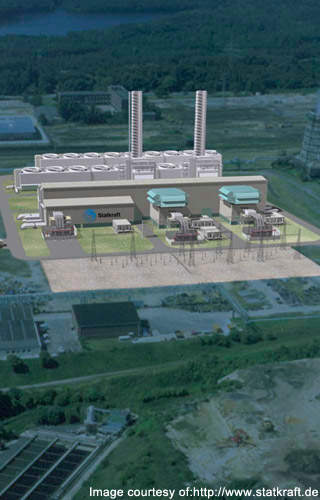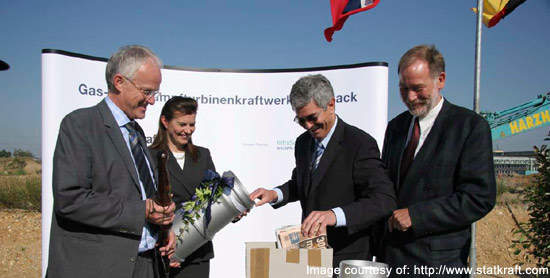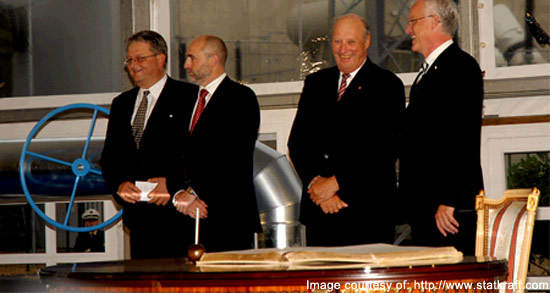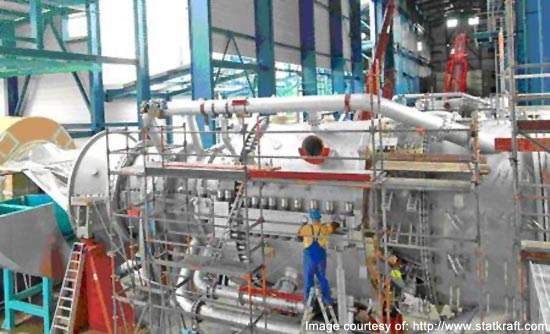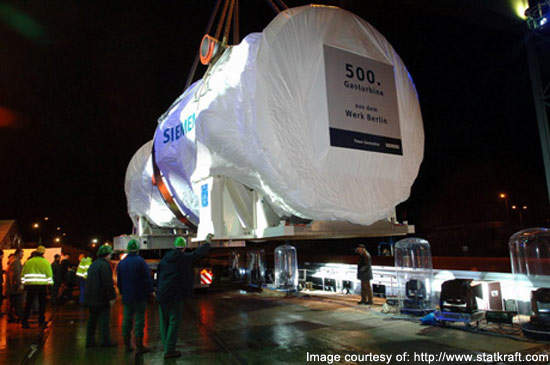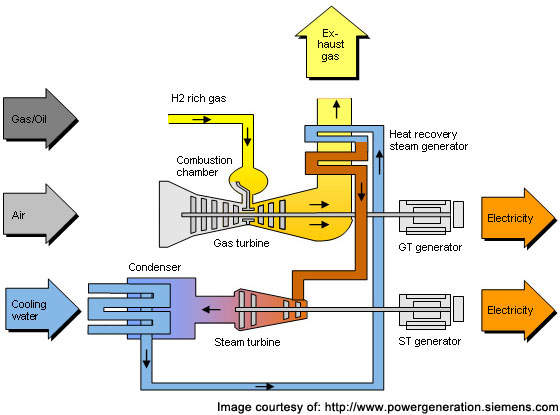An 800MW CCGT plant has been built in the Knapsack Chemiepark, near Cologne in North Rhine-Westphalia. The Knapsack plant was constructed by Siemens for Statkraft, and has two gas turbines (each weighing more than 300t) and a steam turbine.
At full capacity it can produce 6TWh of electrical power each year, enough to meet the power consumption of 1.2 million German homes (equivalent to 5% of the total Norwegian power consumption). The plant cost around €400m, almost NOK3.2bn.
Knapsack is Statkraft’s largest gas-fired power plant project in Germany, which is itself Europe’s largest energy market. The plant is helping economic growth and jobs in an area that has previously been experiencing major problems.
Construction started in the summer of 2005, with the project having to be working by 10 September 2007 to qualify for a German natural gas tax exemption.
The topping out ceremony was in June 2006, nine months after the laying of the foundation stone. The turbines and generators were installed later in 2006.
GAS REPLACING DIRTIER COAL GENERATION
Around 40GW of Germany’s 40-year-old installed power plant capacity will need to be replaced by 2020. New gas power plants currently being built will primarily replace coal power, which causes much more pollution. Gas power plants can, for example,
emit around 50% less CO2 and up to nine times less NOx than coal-fired power plants with similar power.
Siemens supplied the turnkey plant, with the contract including design, component purchase and assembly. The plant has two gas turbines, one steam turbine, three generators and electrical, instrumentation and control equipment. Siemens will also be
responsible for gas turbine maintenance for 12 years.
SIEMENS DESIGNED COMBINED CYCLE PLANT
The hot exhaust of the combined cycle turbine generates steam in a separate water/steam cycle. The hot steam is expanded in a steam turbine to drive the generator. Siemens combined-cycle plants (SCC) units are pre-engineered, from power islands up to
complete turnkey power plants.
The 270MW ‘Big Knapsack’ was the 500th gas turbine to leave the Siemens plant in Berlin. It took around ten months to assemble from 7,000 individual parts. The blade material can withstand high stresses, and temperatures up to 1,500ºC –
close to the melting point of iron. Heat-resistant ceramics are therefore used for the coatings. Siemens is now working on optimising the blade shape to gain even higher efficiency.
GERMAN PROJECT MANAGERS
Statkraft engaged Helmut Hermanns to be project manager. Plant construction is therefore being led by a German team, with the project management and organisation also being German. Gas is supplied by the German company Wingas, across a feeder pipe
built by Statkraft. In 2005, the Dutch energy company Essent contracted to buy 33% of the plant output.
Statkraft’s gas-fired power plants have been constructed as part of the European quota system for greenhouse gases. This is the first time that Statkraft has constructed generating facilities outside of Norway, with Knapsack Power Plant being the first of two gas power plants to be completed.
A 400MW gas plant is being built at Herdecke near Dortmund. Statkraft jointly owns this plant together with the German company Mark E. Statkraft. It also has a 50% shareholding in Naturkraft, which is building a 418MW gas power plant at
Kårstø in Norway.
The test period for the gas power plants at Knapsack, Herdecke and Kårstø, which have a total installed capacity of 1,600MW, began in June 2007. The plants are a new experience for Statkraft, which is used to using ‘free’ water and wind
– the company is having to pay for its raw materials for the first time.

